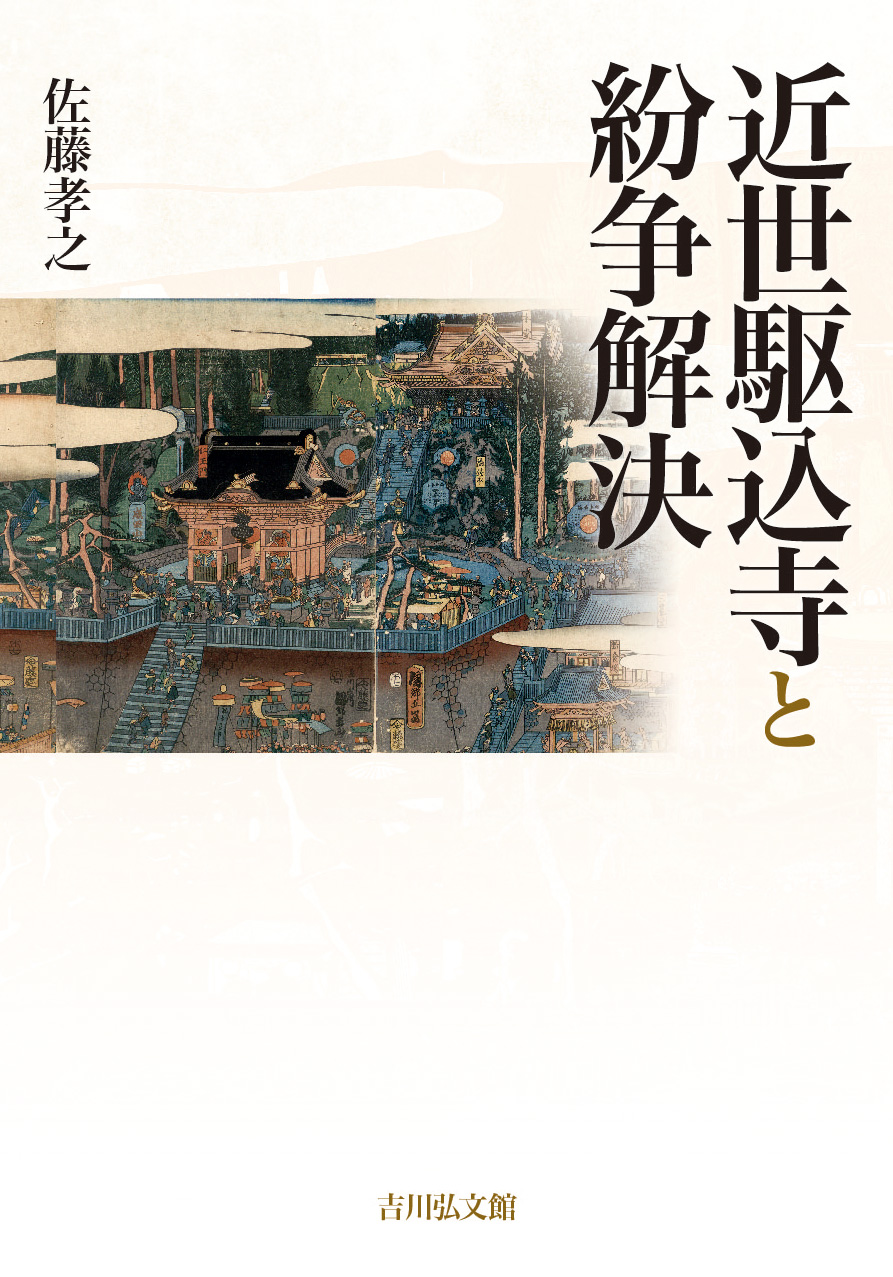
Title
Kinsei Kakekomi-dera to Funso Kaiketsu (Temple Refuges and Conflict Resolution in the Early Modern Period)
Size
190 pages, A5 format
Language
Japanese
Released
February 15, 2019
ISBN
9784642034944
Published by
Yoshikawa Kobunkan
Book Info
See Book Availability at Library
Japanese Page
This book investigates some distinctive features of early modern society in Japan by elucidating the act of taking refuge in a temple during the Edo period, most commonly referred to at the time as nyūji. Taking refuge in temples may remind readers of Tōkeiji in Kamakura, which was famous as a temple that gave sanctuary to women wishing to leave their husbands, but Tōkeiji was in fact not the only such temple refuge. It would be no exaggeration to say that in the Edo period all temples in towns and villages served as refuges, and people took refuge in temples for a great variety of reasons, including divorce.
The act of taking refuge in a temple goes back to the idea of asylums, or sanctuaries. An asylum was a place whose privileges as a social refuge independent of secular power were guaranteed, and even a criminal could escape pursuit by the authorities if he took refuge in an asylum, the most common form of which was a temple. The Sengoku period was a golden age for such asylums, but following the establishment of a unified administration in the early modern period they are said to have been banned and to have disappeared. But when one looks at the realities of nyūji in the Edo period, one finds in temples a manifestation of the asylum that had been carried over from the previous period and transformed in a way that suited the early modern period.
In Part I, I endeavour to understand the formation of nyūji in the Edo period as the process of a transformation of asylums. In chapter 1, I trace the transformation of asylums from the Sengoku period to the start of the early modern period and the formation of early modern temple refuges. In chapter 2, I focus on the word sanrin (“mountain forest”) found in the Tōkai region and probe the transformation of asylums by going back to the Sengoku period and even earlier. In chapter 3, I change my perspective and take up the taking of refuge in shrines and examine changes in shrine asylums from the Sengoku period to the start of the early modern period. In a supplementary discussion, I focus on the expression “enclosing bamboo grass” (sasa o hiku or sasahiki), which has attracted attention in connection with medieval asylums, and clarify early modern changes in its meaning.
In part II, my aim is to shed light on various aspects of nyūji in the Edo period with reference to specific examples in several regions and to clarify various modes of nyūji in a multifaceted way. In chapter 1, I examine the question of how outbreaks of fires in villages were dealt with, when the person responsible would take refuge in the local temple as a form of penitence. In chapter 2, dealing with Moriyama domain in northern Japan, I clarify theoretical differences between nyūji and kakeiri In chapter 3, I elucidate nyūji in Tatebayashi domain in present-day Gunma prefecture, where the lord of the domain frequently changed. In chapter 4, taking the temple Shinshōji in Narita as an example, I take a look at petitionary and relief activities mediated by temples. In a supplementary discussion, I describe nyūji in Matsumae domain in Hokkaido.
In this fashion, various aspects can be pointed out in nyūji during the Edo period, and I show that its main function was that of a system of internal conflict resolution in village society, serving as a method for resolving conflict and restoring and maintaining village order that differed from the methods based on public law that were employed by local overlords. Together with my previous study, titled Temple Refuges and Village Society (Tokyo: Yoshikawa Kōbunkan, 2006), this research on nyūji sheds light on the existence of this practice throughout Japan, and as well as urging a rethinking of the functions and roles of temples, it elucidates the distinctive development of asylums in early modern village society.
(Written by SATO Takayuki, Professor Emeritus, Historiographical Institute / 2020)



 Find a book
Find a book


 eBook
eBook